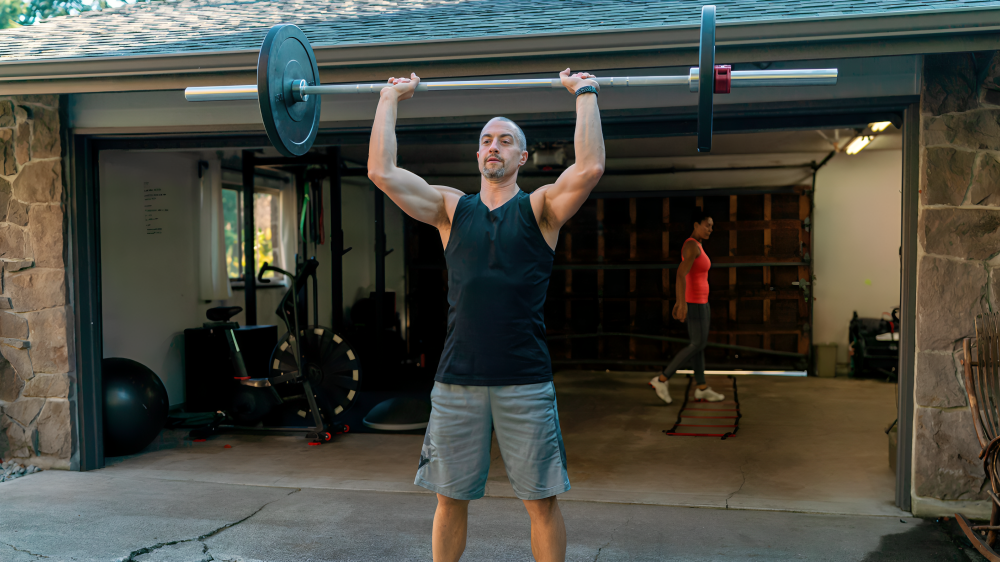
What Is the Push Press?
At bottom, the push press is a compound lift that works your shoulder muscles, but it requires coordination from the lower body as well. The lower body engagement, without which-as against the strict overhead press, where the whole work rests solely on your upper body-the push press depends upon a slight dip and drive from the legs to help propel the barbell-or dumbbells-overhead. This extra leg drive will enable you to lift heavier loads, which is important to build total-body strength.
How to Do a Push Press
Getting the form right is critical for effectiveness and also in trying to avoid injury. How to perform the push press includes the following steps:
Set Up
Starting position: Stand with feet shoulder-width apart.
Hold the barbell (or dumbbells) at shoulder height with your palms facing forwards, elbows slightly in front of the bar.
Engage your core and keep a neutral spine.
Dip
Slight Knee Bend: Bend the knees slightly while dipping them, and make a quarter squat with the torso still up. Whatever you do, just avoid turning this into a full squat; it’s only a slight bend.
Drive
Explosive Movement: As your legs straighten, drive the barbell upwards. The momentum you get from your legs is going to help in propelling the bar overhead.
Use your legs and core for power to drive the weight up.
Press
Full Extension of Arms: Once the bar clears your forehead level, complete the press with an extension of the arms fully upwards.
Align the bar with the back of your head, not out in front. This helps maintain balance and takes some of the stress off the shoulder joint.
Lower the Bar
Controlled Descent: Slowly lower the bar back to the starting position. Don’t just drop it down—control the movement to maintain tension in your shoulders and core.
Benefits of the Push Press
Full-Body Engagement
The push press is a full-body movement. While it works your shoulders, it also involves your legs, core, and even your upper back. This turns it into a highly effective compound exercise in enhancing coordination and muscle engagement.
Builds Explosive Power
The dip and drive technique involved in push presses develop an explosive power of your lower and upper body. This form of power is good for athletic activities as well as day-to-day activities that require both strength and speed.
Shoulders Much Stronger
The good thing with momentum from the legs is that you can press more weight than with a strict press. This extra load will challenge your shoulders and, in due time, you will develop greater strength and endurance.
Boosts Core Stability
This means the core has to be strongly activated to keep the bar balanced overhead. Therefore, the push press develops core stability and strength, which is a pre-requisite for good posture and, finally good overall body control.
Time-Efficient
Because this lift engages many muscles in one motion, it’s a time-saver. This eliminates the necessity to isolate areas with single lifts, making it possible to train your entire body effectively by incorporating the push press.
It’s Here T-Bar Row for upper and middle back how to do it and what are the benefits
FAQs
1. Can beginners do the push press?
Of course! The push press is a beginner-friendly exercise, but you really must learn how to overhead press correctly and practice with lighter weights before trying to go heavy.
2. Is it better to do push press with dumbbells or barbell?
Both work. Dumbbells provide for greater range of motion and require you to stabilize more. A barbell lets you lift heavier.
3. How often should I perform the push press?
This depends on your goals. If you are focused on strength, then the push press can be performed once or twice per week. For endurance or circuit training, it can be performed more frequently at lighter workouts.

